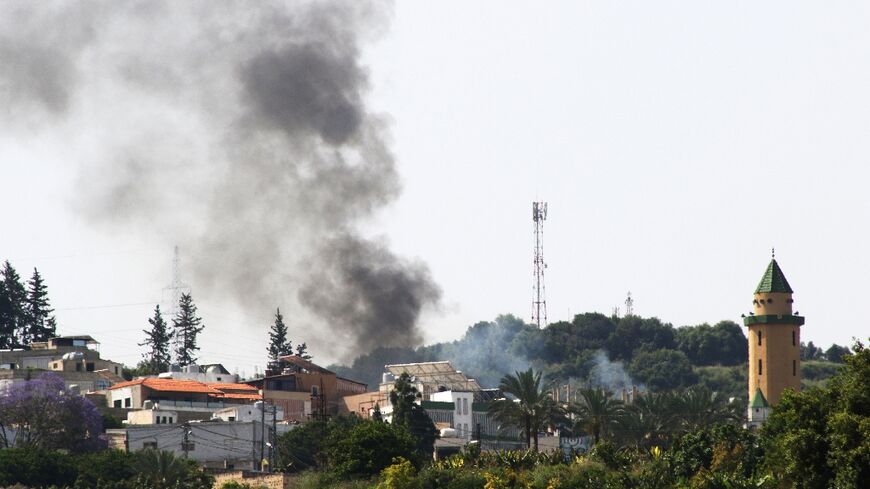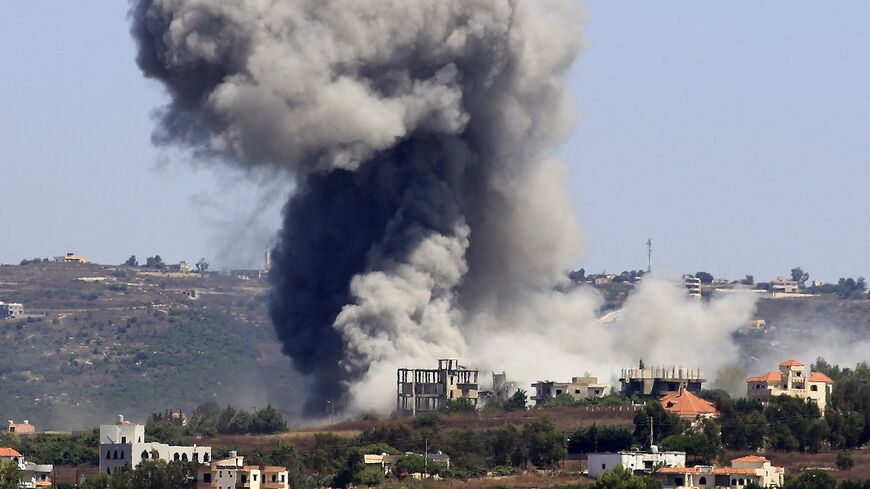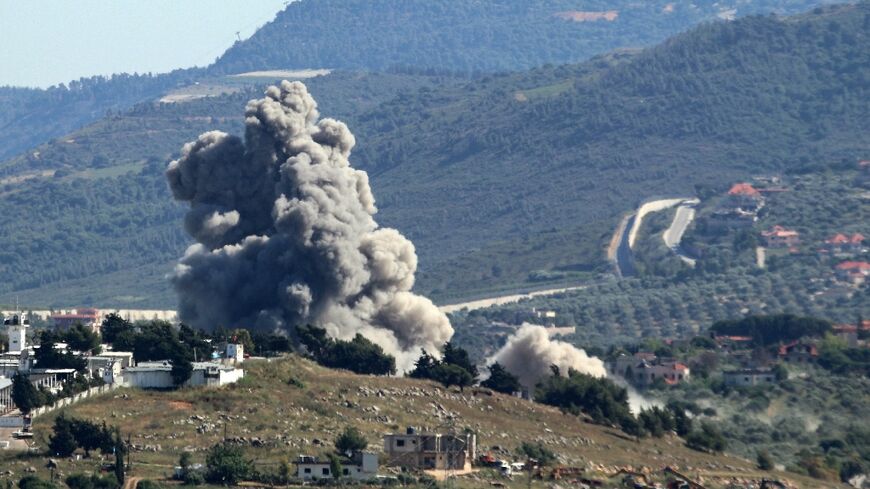Hezbollah claims use of new drone with S-5 missiles against Israel
The Iran-backed group said it used a drone equipped with S-5 missiles in an attack against military sites in northern Israel, a first since hostilities erupted last October.

BEIRUT — The Lebanese paramilitary group Hezbollah claims to have deployed a never-before-used weapon in its fight with Israel this week, as the Lebanon-Israel front continues to heat up.
In a statement on Thursday, Hezbollah said it had launched a drone armed with two S-5 missiles at an Israeli military site near the northern community of Metula.
The group released footage through affiliated media of the drone strike in Metula, saying the drone fired the two missiles at a military vehicle and soldiers gathered around it, “achieving a direct hit.”
The Israeli military confirmed the attack, saying that three soldiers were injured, including one with serious injuries.
The attack marked the first known time the movement has used a type of drone that carries missiles instead of the explosive-laden drones that it has repeatedly launched toward Israel since cross-border hostilities began in October 2023.
The S-5 is a Soviet-era 57-mm unguided air-to-surface missile equipped with a high-explosive warhead, a solid-propellant motor, and folding tail fins for stability, according to an infographic published by Hezbollah in its media. The S-5 is 1.4 meters (4.5 feet) long and weighs about five kilograms (11 pounds), with a four-kilometer range (2.4 miles).
مشاهد من عملية إستهداف المقــ ـاومـ ـة الإسـ ـلامـ ـية موقع المطلة التابع لجيش العـ ـدو "الإسـ ـرائـ ـيلي" بمسيّرة هجوميّة مسلّحة بصواريخ S5#ملحق pic.twitter.com/8Vfcnh0i3K
— Mulhak - ملحق (@Mulhak) May 16, 2024
Hezbollah has recently escalated its attacks on Israel, and both sides have engaged in heavy cross-border fire since the Gaza war began.
Earlier on Wednesday, the Iran-backed group claimed a drone attack on an Israeli facility near the Golani Junction, some 35 kilometers (21 miles) from the Lebanon border. The installation houses a giant missile-detecting blimp, Sky Dew, used by the Israeli army.
The attack, which Israel said caused damage that is still being assessed, was Hezbollah’s deepest strike on Israeli territory since the start of the hostilities last fall.
“This is a method of sending messages on the ground to the Israeli enemy, meaning that this is part of what we [Hezbollah] have, and if needed we can strike more,” Lebanese political analyst Faisal Abdul-Sater told the Associated Press on Friday.
Hezbollah, founded in 1982 to oppose the Israeli invasion of southern Lebanon, is the only Lebanese faction to have kept its weapons after the end of the country’s civil war in 1990 and after the Israeli withdrawal in 2000. The movement insists that its growing arsenal is necessary for resistance against Israel.
With strong backing from Iran, Hezbollah has continued to develop its stockpiles and expand its military engagement into the Syria and Yemen conflicts.
Today, Hezbollah's militia is believed to consist of 50,000 to 100,000 fighters and its vast arsenal to include some 150,000 to 200,000 rockets, mortar bombs, and missiles.
On Friday, Israeli airstrikes near the southern Lebanese city of Sidon killed at least three people, including a Hezbollah member.
The Israeli army confirmed the strikes in the Lebanese town of al-Najjariyeh, some 30 kilometers from the border with Israel, saying that its fighter jets had hit several facilities where Hezbollah operatives were gathered.
“These compounds were used by Hezbollah’s air defense array, and posed a threat to Israeli aircraft,” the army added in a post on X.
Following the attack, Hezbollah announced the killing of one of its fighters, whom it identified as Hussein Khoder Mahdi from the town of al-Najjariyeh.
The attack also left two Syrian children dead, according to the state-run National News Agency.
Later, the Israeli military said Hezbollah had fired 75 rockets toward northern Israel, one of the largest barrages by the militant group since the outbreak of hostilities. The Iron Dome managed to down dozens of the rockets.
Israeli media cited the Magen David Adom ambulance service as saying that two people, men in their 60s, were wounded in the attack, which targeted the Upper Galilee.
Hezbollah claimed responsibility for the attack, saying it had fired 50 Katyusha rockets at an Israeli military base in the Golan, in retaliation for the al-Najjariyeh strikes.




